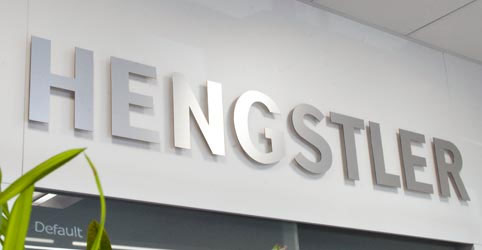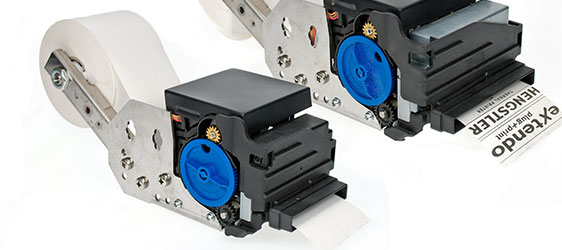
Print speed is affected by many factors. No, faster is not always better. In thermal printing, printing faster increases current draw, which can increase power supply costs. Other significant factors affecting print speed include:

Increasing print energy will improve print quality, but at the same time will decrease average print speed. Therefore, burn time settings are always a trade-off between these two characteristics. Use the lowest print energy that is visually acceptable to keep the print speed up. The same effect would apply when we will discuss the maximum current that is available for a printer in an application. Print density is a measurement of how dense or “black” a printout is. An optical density of approx. 1.1 is usually a full black to the human eye. Lower optical densities thus correspond to varying shades of grey. Print density also depends on how sensitive a given thermal paper reacts to the amount of heat or energy.
Dot history monitors previously burned dots and reheats them for a shorter time to prevent blooming and excessively black areas. If the printhead does not lose heat quickly enough, the next pulse maybe applied before the temperature has dropped to a base level. The result of a too short cooling time is too much heat for the next dot. This will lead too poor print quality and, in the worst case, shorter printhead life. History control means using a shorter pulse width to print a dot when the same printhead retains heat from printing a previous line. Using dot history and minimizing the main burn time will increase print speed.
Some printers include a feature that will adjust burn time automatically depending upon ambient temperature. Burn time correction allows the adjustment of these burn times to “tune” the printer to maximum performance for any given paper, thereby improving print quality but having little effect on print speed. If print speed is truly critical, reducing these values will increase print speed slightly at the cost of lower contrast in the printout.
When this feature is turned on, only half of the printhead dots are fired at a time, reducing the peak current by a factor of two, but having virtually no effect on average current. This is very useful if your power supply has a restrictive maximum current but may slow down printing.
There is a repeating period within which a thermal printer prints a line, and then moves the media to the next line. This is called cycle time or pulse cycle. The cycle time is a sum of pulse width, when electrical current flows through the printhead, and the cooling time, when no current flows. A shorter cycle time means higher printing speed.
Print speed is related to media sensitivity. Printing on high sensitivity media requires less energy than on low sensitivity media. Less required energy can mean reduced pulse width and reduced cycle time.
If higher voltage can be applied to the thermal printhead, a shorter pulse width can achieve enough energy to darken the media. A shorter pulse width can support a shorter cycle time. Nevertheless, the printhead is limited by the allowed voltage and current flow which shouldn’t be exceeded.
The last determining factor for print speed is the acceptable wait time for a user of the application. What is the average wait time that a user would except from your application? All the factors mentioned above have to some extent influence on the print speed. Some factors more, others less. At the end of the day all these factors affect the wait time for a printout. Consider how patient you sometimes are when using a kiosk. Sometimes we don’t mind if the printout takes one or two seconds longer and other day’s one or two seconds just seems too long.
The HENGSTLER team is expert in matching printers to the application. Whether it’s gas pump receipts, bank statement printers, railway ticketing systems, kiosks, fire alarm systems, or just about anything else, we’ve seen it and can help locate and integrate the best-suited printer for the purpose needed. Moreover, we can support our customers effectively by offering tailor-made application projects. Contact us today with your application or challenge